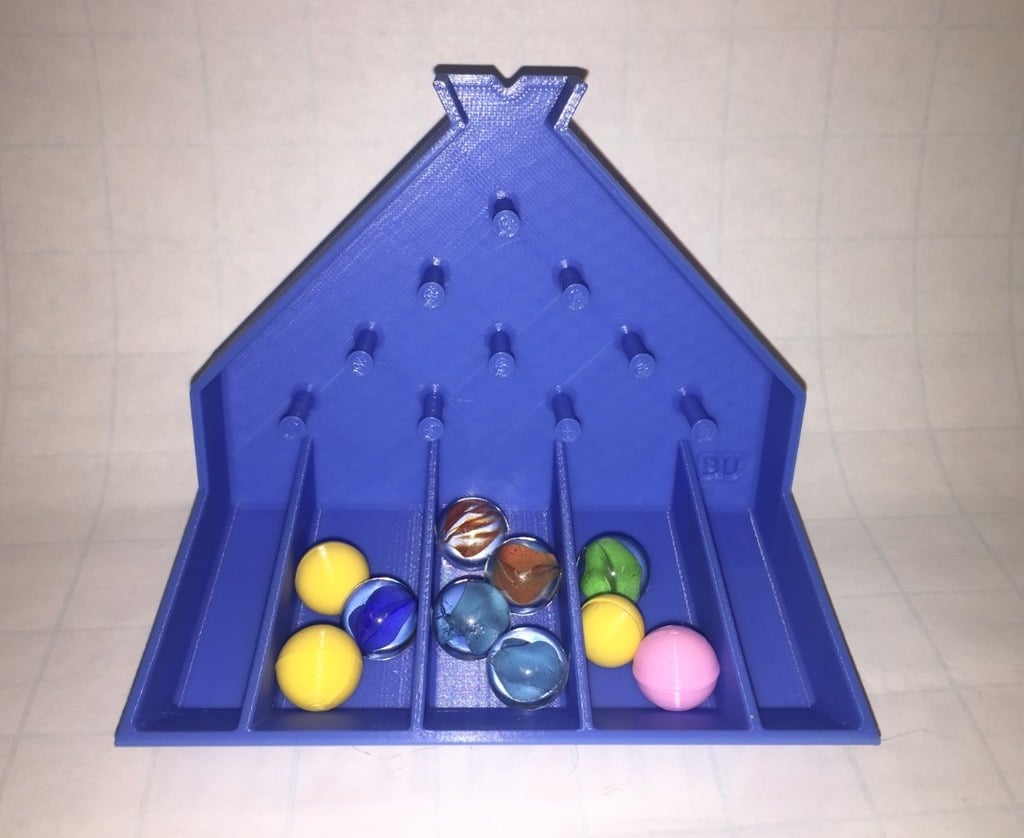
Plinko (Galton Board, Binomial Distribution, Bernoulli Trials)
thingiverse
The Plinko Game, also known as a Galton Board, is a fascinating tool for students to experience and think about the laws of probability. For example, if you toss four fair coins, what is the probability that you end up with 2 heads and 2 tails? In other words, if you drop a ball into the Plinko opening, how likely is it going to land in the middle drawer? This type of problem is related to the binomial distribution, combinatorial counting, Pascal's triangle, etc. The Plinko design here has four layers and measures approximately 127mm x 110mm x 86mm, meaning it can be printed on most small 3D printers. The space between the pins is 16.1mm, allowing the use of marbles that are less than 16mm in diameter. The board is tilted backward 15 degrees for smooth movement. Two balls, measuring 15mm and 15.8mm respectively in diameter, are included. For easy printing, the balls are split into halves with internal adjustments for easy printing and assembly. If the connector is not tight enough, a drop of glue might be useful. Standards marbles work just as well. Warning: Small parts can be dangerous for children when swallowed; please educate children not to put little things into their mouth and follow all safety rules when working with young children. Have fun! References: 1. https://en.wikipedia.org/wiki/Bernoulli_trial 2. http://mathworld.wolfram.com/GaltonBoard.html 3. https://phet.colorado.edu/en/simulation/plinko-probability Plinko Game Update: A new version with bigger and stronger pins (dia = 6 mm) has been added.
With this file you will be able to print Plinko (Galton Board, Binomial Distribution, Bernoulli Trials) with your 3D printer. Click on the button and save the file on your computer to work, edit or customize your design. You can also find more 3D designs for printers on Plinko (Galton Board, Binomial Distribution, Bernoulli Trials).
